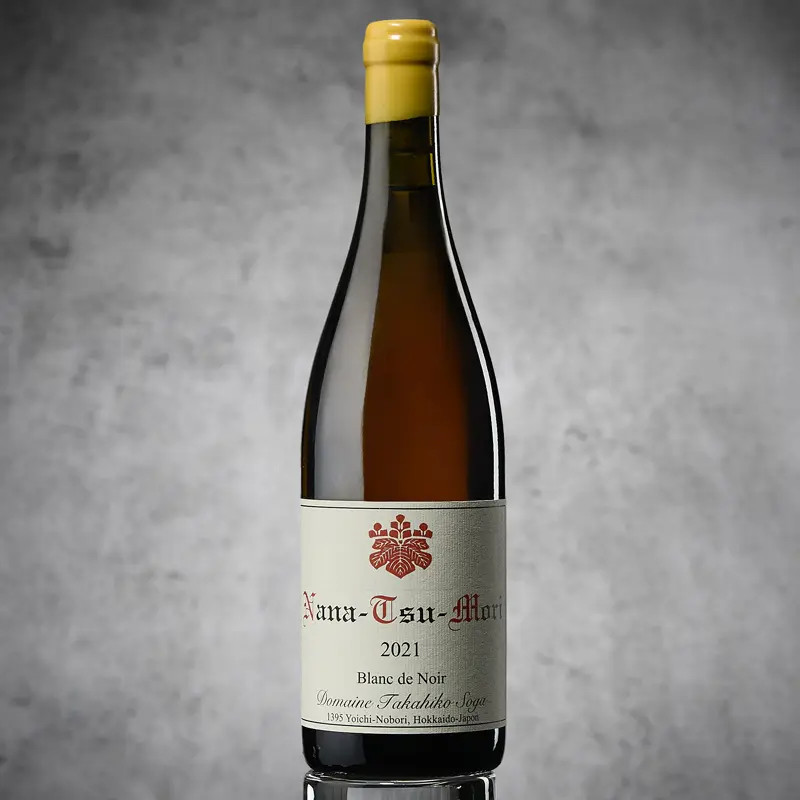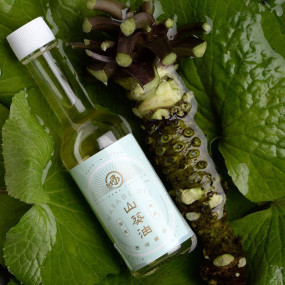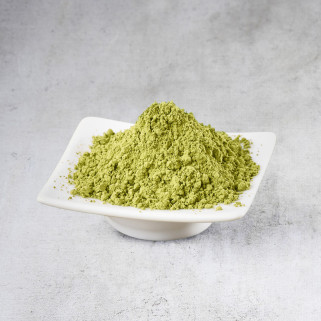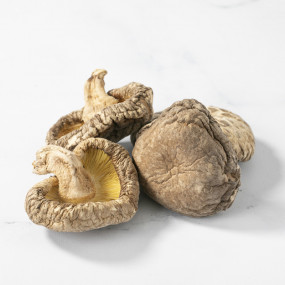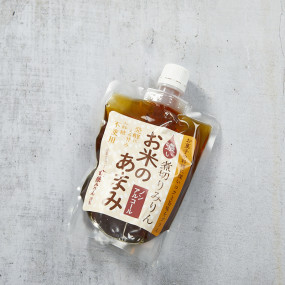This vineyard has around 9,000 Pinot Noir vines and a small winery that produces 20,000 bottles of wine a year. The vineyard is located on a well-drained hillside at an altitude of 60 m in Yoichi. Geological feature is volcanic clay soil mixed with weathered gravel and sand on andesite host rock.
Affected by warm seawater, the region is relatively warm in Hokkaido and receives less precipitation. In addition, due to the region's unique topography, surrounded by capes and mountains, trees and plants are few and far between. Vines and grapes are protected from disease by the sea breeze and the dry wind that blows from Mount Yotei over the region. In winter, snowfalls exceed 1 meter, and thanks to the powdery snow covering the vines, they protect the Pinot Noirs from the harsh winter cold.
Mr. Soga's winemaking philosophy is to do as little as possible and let nature do its job of fermenting wild grapes, whole bunches, without sulfites. There's no need to follow manuals; Domaine Takahiko makes wine from the heart. For Mr. Soga, the ideal wine produced in Japan must be in harmony with the Japanese climate in terms of taste and aroma to express the beauty of Japanese food culture. His wine is not available to the general public. Nana-Tsu-Mori is now a high-end wine brand in Japan. Takahiko Soga's wines are a phenomenon in Japan.
Wines from his tiny estate, located at the northern tip of Japan's northernmost island, Hokkaido, are among the most sought-after and hard-to-find in Japanese restaurants and wine stores. Hundreds of volunteers from all over Japan come to the estate to help with the harvest, all attracted by the unique wines and philosophy of the estate's founder, as well as the incredible quality of its natural wines.
Takahiko's influence extends beyond an interest in his own wines, as a community of former apprentices and current acolytes continues to grow around him and his Yoichi farm. All are drawn to his delicate, flavorful wines, his simple, unpretentious approach to winemaking and his regenerative, committed and diligent farming practices. Domaine is an important word for Takahiko Soga. Being of French origin, it may seem a little out of place for a project whose sensibility is typically Japanese.
The choice of Pinot Noir as winery's main grape variety reflects the influence of French wine (and in particular Jura and Burgundy) on Takahiko Soga's project, but the word “domaine” also expresses the limited nature of the project and the close identification with agriculture and the land itself. Domaine Takahiko wines are the expression of Yoichi's unique terroir. Takahiko Soga considers himself first and foremost a farmer and sees his work as essentially agricultural.
He shares this identity with his Yoichi neighbors, whether they grow potatoes, apples, cherries or grapes. Yoichi lies at the foot of mountainous Shakotan Peninsula, on the northern coast of Hokkaido. Hokkaido, northernmost of Japan's main islands, is generally characterized by hot, humid summers and icy winters with abundant powdery snow. This island's soils are dark, soft and highly fertile, and Hokkaido's produce - potatoes, cereals, flowers, fruit, herbs and vegetables - is renowned throughout Japan for its quality. In a country that is largely inhospitable to Vitis vinifera due to its heat and humidity, Hokkaido is also particularly well suited to growing grapes and making high-quality wines without interventionist farming practices.
Yoichi, protected from the extremes of Hokkaido's climate by the mountains and characterized by well-drained gravel and sand hillsides, is particularly well suited to viticulture. Usual responses to botrytis might be the intensive use of fungicides (which runs counter to the philosophy of Domaine Takahiko) or an attempt to make a sweet wine, which Takahiko Soga was not interested in. Seeing that Botrytis infection arrived year after year, Takahiko Soga set out instead to produce a dry wine from these grapes.
Using blowers in the vines, he monitors the extent and severity of noble rot and harvests affected berries separately. It is from these berries that he produces Domaine Takahiko Nana Tsu Mori Blanc de Noir: the infected berries are pressed directly after harvest, and the juice ferments dry (or nearly dry) every year. This wine, rather than being reddish, aromatic and sweet, is deep and defined by its savory, umami notes. Takahiko works with whole-cluster fermentations in his wines, and it's this that gives them their unique character.
